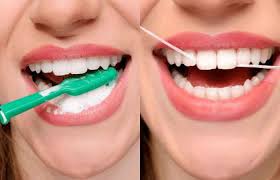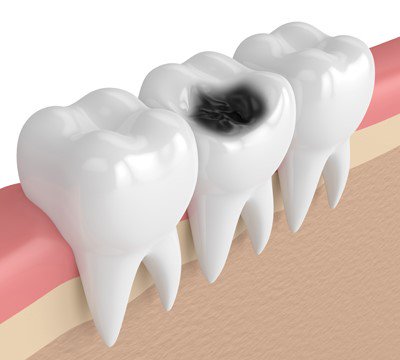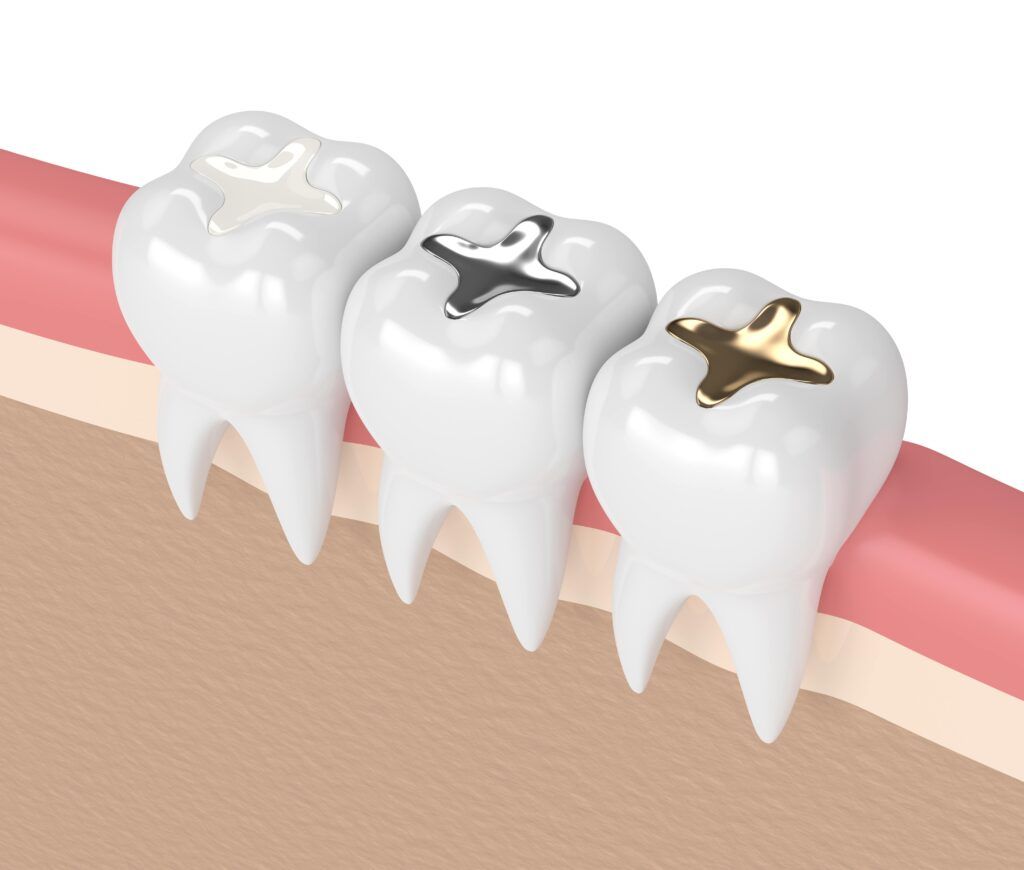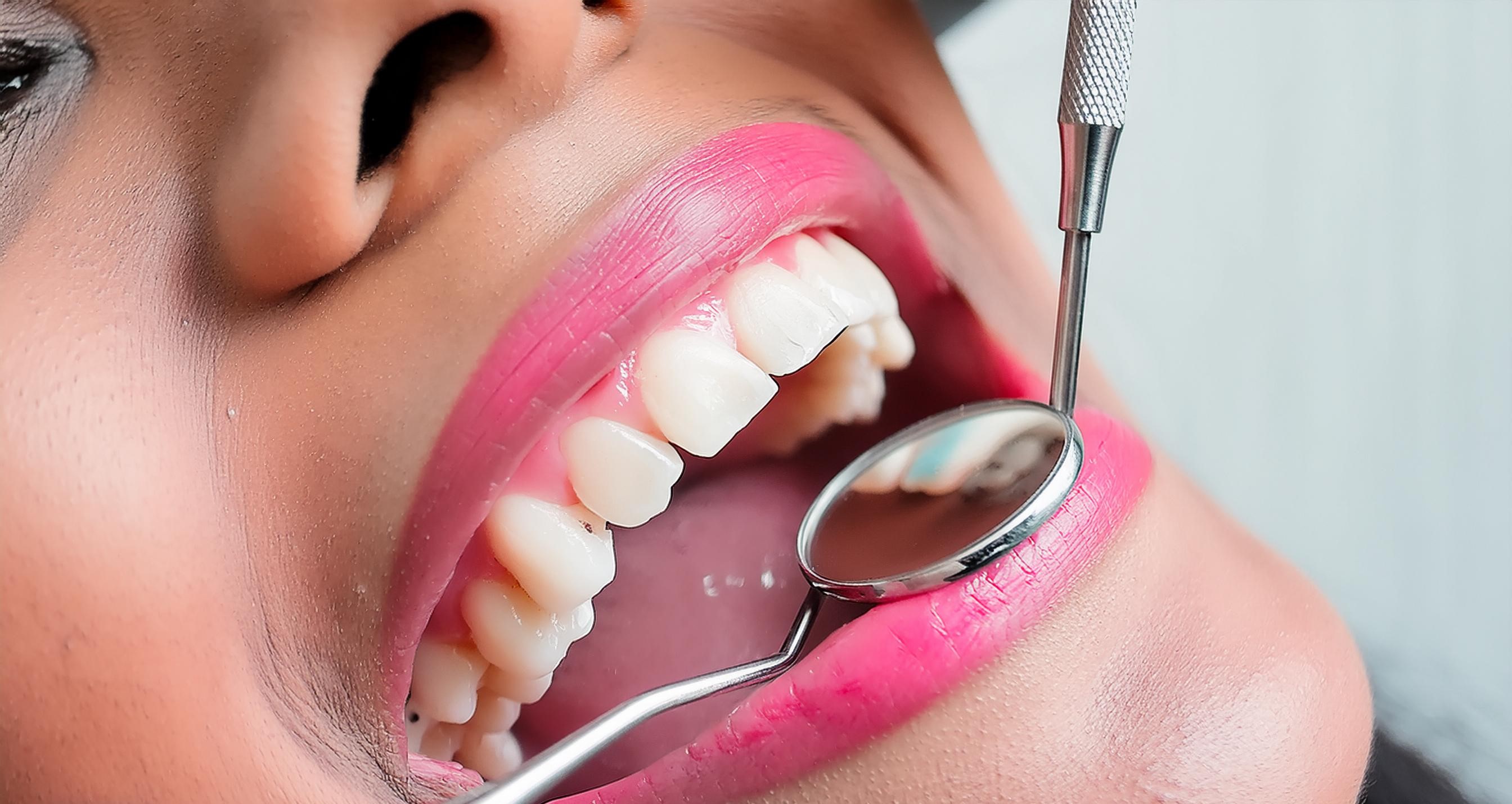Cavity which is also called tooth decay is a common oral dental issue seen in both adults and youngsters worldwide. Despite being curable it may lead to serious oral complications if left untreated. The cavity is a small hole in your tooth that develops from tooth decay. There are a few bacteria present in our mouth surface which include both good and bad bacteria. They combine with the leftover foods or drinks on the mouth surface and release a few acids. Cavity occurs when bacteria in your mouth release acids that dissolve in tooth enamel(the outer layer of teeth). Cavities can be seen more often in back teeth which are also called molars and pre-molars, that is because they can trap food particles quickly. Back teeth more often have a cavity as the back teeth are harder to clean thoroughly as compared to front teeth i.e., incisors and canines so, they easily get prone to tooth decay. Cavities can also develop in front teeth if your oral hygiene is poor.
What causes tooth decay/Cavity?
1)1)People who do not brush and floss well can more often see a cavity, this is because inadequate brushing and flossing leads to a buildup of plaque resulting in a cavity.

2)Bacteria is the main reason behind tooth decay i.e., bacteria in the mouth produce acids that erode the enamel and cause tooth decay.

3)Consuming starchy foods such as potatoes, bread pasta, etc, and sugary drinks also develops acid and causes a cavity. Consuming highly acidic foods and drinks such as white bread, alcohol, soda, and sugar etc can also cause cavities.
4)It may sound odd but dry mouth also can cause cavities because saliva in the mouth neutralizes the acid present, so lack of saliva can also lead to tooth decay.
5)Certain health issues such as acid reflux, gum recession(when your gum is pulled out from your teeth), and taking antidepressants cause dry mouth and may lead to tooth decay.
6)Not having enough fluoride content in your toothpaste or water can cause tooth decay because fluoride hardens your enamel and keeps it healthy. So, if you do not have optimum fluoride content it can also cause cavities.
What are the signs and symptoms of having a cavity in your teeth?
1)Tooth pain or tooth sensitivity of tooth decay. You may experience tooth pain while chewing hot, cold, or sweet foods and drinks. Consumption of acidic foods and carbonated beverages also makes your teeth feel sensitive, particularly in certain teeth.
2)Visible holes or dark spots on your teeth may also be associated with cavities because the name itself is a cavity which means a hole on the surface of your teeth.
3)Black, brown dark spots on teeth or pale teeth are also signs that you may have cavities in your teeth.
4)Bad breath which does not reduce after maintaining proper oral hygiene is also a symptom of the cavity.
5)Swelling around the tooth pus from the gum, and loose and cracked teeth are also symptoms of tooth cavities.
How can you confirm having a cavity?
Soon after you experience the maximum number of symptoms from the above-mentioned points you need to visit a dentist who will help you with a series of tests and visual examinations to confirm if you have a cavity or any other issue. The diagnosis tests include:
1)Visual examination :
In which the dentist will visually see the cavity or the affected teeth, gum, etc.
2)Dental probing:
It is done using certain dental instruments to examine the teeth and detect the cavity.
3)X-rays:
Dental X-rays provide a clear image of teeth to detect the presence of a cavity.
Dentist generally diagnoses the cavity with the above-mentioned tests and if you are confirmed to have a cavity then you are followed up with the treatment procedure.
What are the treatment options available for cavities and how to prevent cavities?
1)Mineralization:
Mineralization refers to fluoride treatment for the damaged enamel that may be done with fluoride-containing toothpaste, mouthwash, and oral medications.
2)Dental filling:

The dentist removes the decayed portion of the teeth and fills it with suitable materials such as silver amalgam, gold, porcelain, composite resin, etc.
3)Dental crown:
Also called a dental cap covers the entire tooth surface which is damaged restoring its shape, size, and appearance.
4)Root canal treatment:
It is done to treat excessively damaged teeth which means when the damage reaches the pulp of the teeth instead of removing them. It is done by removing the damaged pulp and cleaning the canals inside the roots of the teeth. The tooth is then restored completely by having a filling or crown.
5)Tooth extraction:
Tooth extraction is a dental procedure in which the teeth are completely removed from the gum. It is done in case of severe damage to the teeth.
Prevention:
Regular brushing and flossing, including fluoride toothpaste, maintaining a healthy diet by limiting starchy and sugary foods and drinks, and regular dental checkups can prevent you from having a cavity.
Cavity or tooth decay is a common dental problem affecting most people with simple preventive measures and by following proper oral hygiene you can maintain a healthy smile with healthy teeth.
